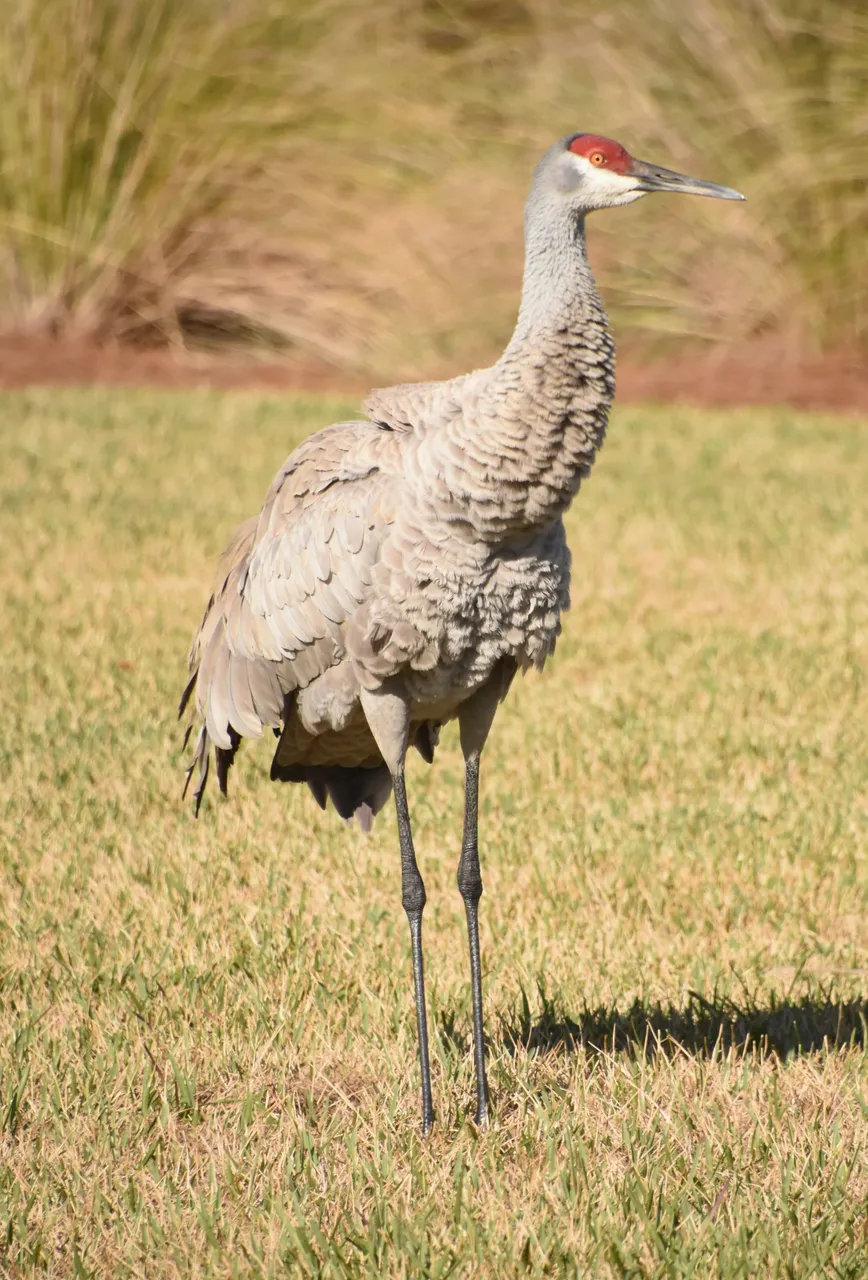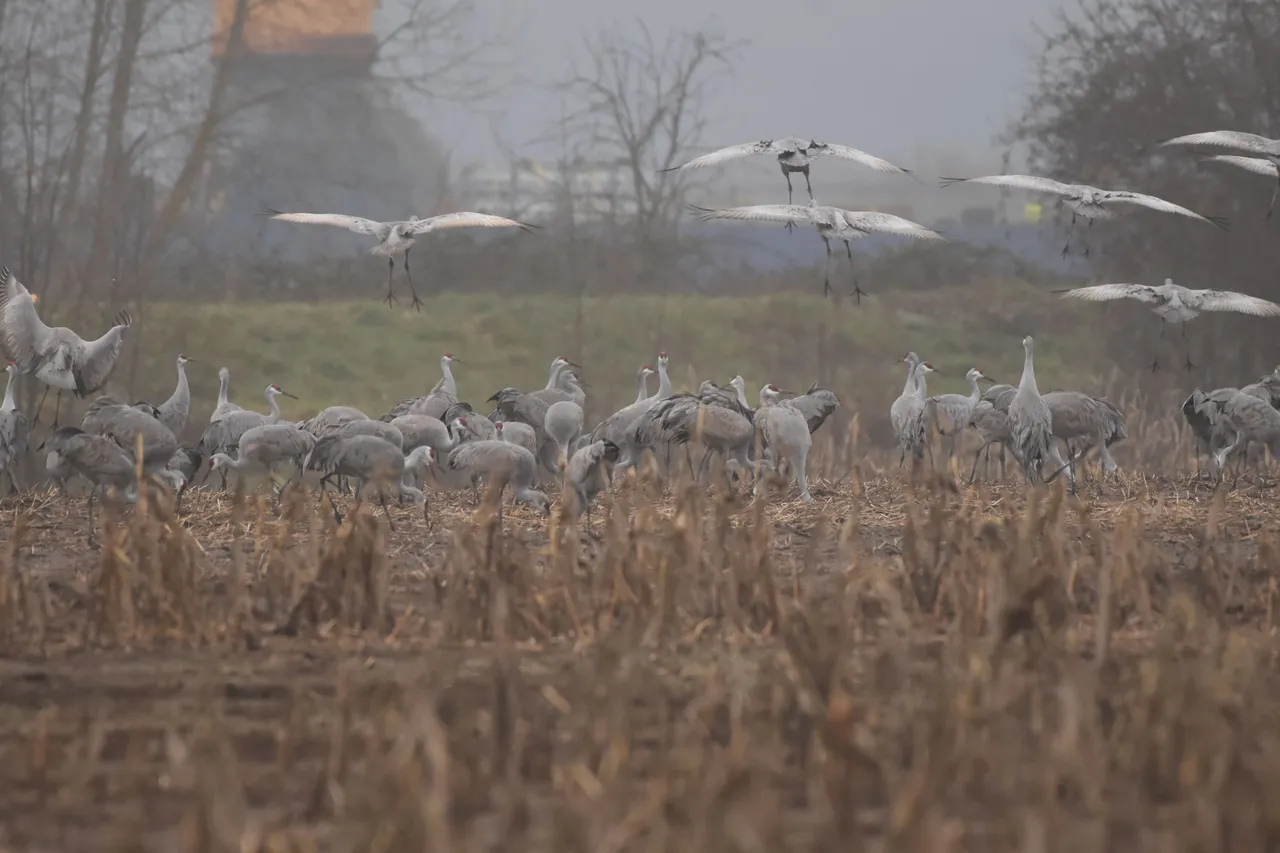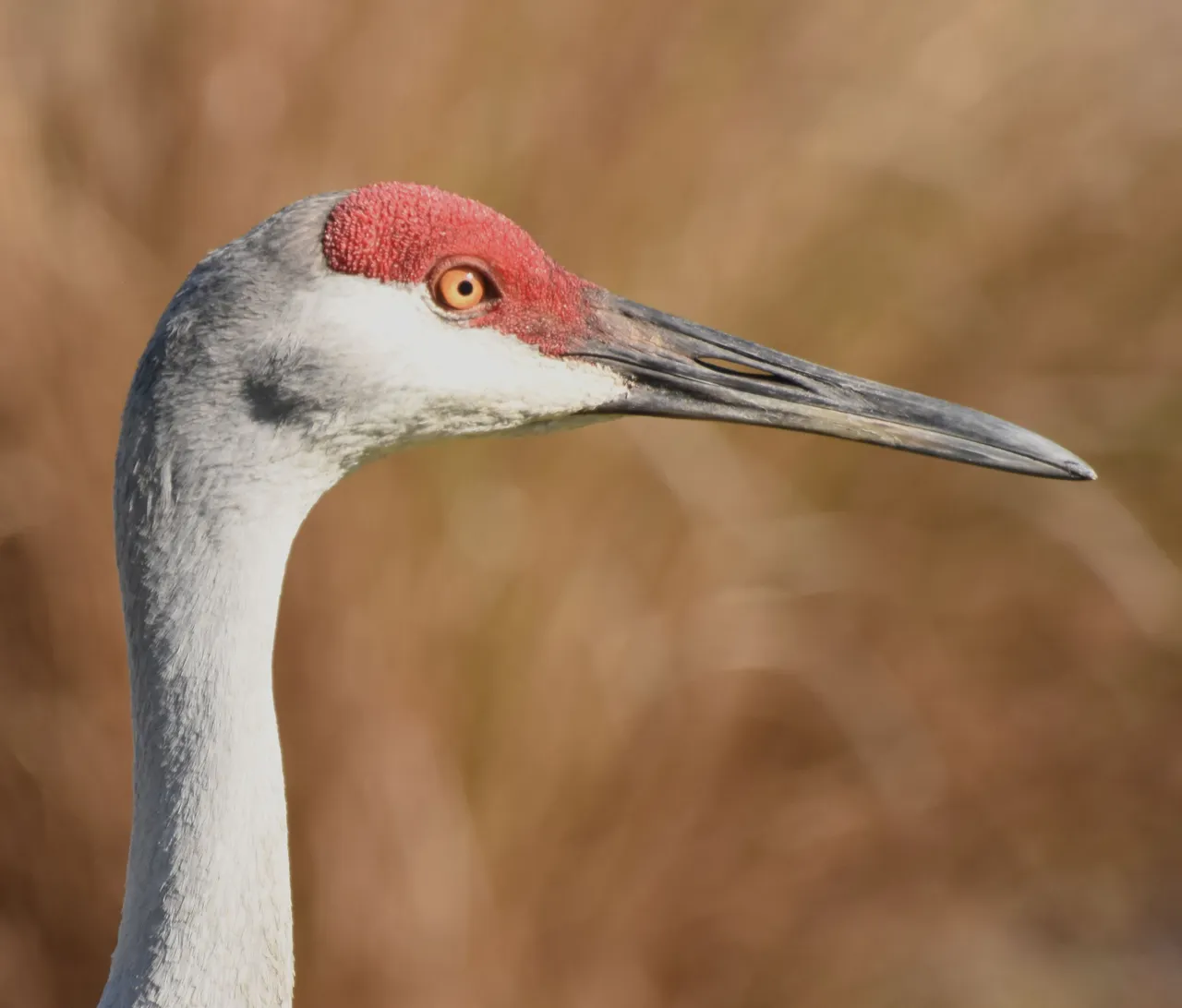
Sandhill Crane Antigone canadensis in Florida today.
In the U.S. we have only two regularly occurring cranes, the rare and endangered Whooping Crane and the more widespread and common Sandhill Crane. I'm visiting my brother in Florida now, and the first birds I saw this morning were a pair of Sandhill Cranes poking around in his small suburban back yard. I knew that this species is common here, and knew that the Florida population of Sandhill Cranes is non-migratory and likes places like golf courses, suburban wetlands, and is a common visitor to swimming pools and back yards.
In other parts of the U.S., like Washington State where I live, the Sandhill Cranes are highly migratory, and are seen in winter in large flocks in some areas, and in spring in huge migrating flocks.
I saw this flock of maybe 1500 birds at the Vancouver Bottoms area near the Columbia River in January of this year.

These birds are usually seen at some distance. They would never allow a birder to walk to within a few feet for a photo.
The birds in Florida are very accustomed to humans, and this bird flew to withing 15 feet of me today, so close that I could only get head shots with my long lens.


Sandhill Cranes are large birds, and can live to 35 years old in the wild. Despite their longevity populations expand very slowly because they do not breed until 2-8 years of age, and produce only about 0.3 young to the age of maturity. They are considered socialy monogamous, often forming long term bond pairs, and with both parents sharing the care of young for an extended time. They are omniverous and eat plants, waste grain in agricultural fields, and both small vertebrates and invertebrates.
They have a loud strange call especially in flight, and are often heard well before they are seen.
My Florida visit is mostly a family visit with birding secondary, but the cranes today were an easy and appreciated bonus.
Good birding.